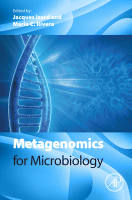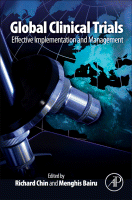Multidisciplinary Approach to Neurofibromatosis Type 1 2020 ORIGINAL PDF
$9
Multidisciplinary Approach to Neurofibromatosis Type 1 2020 ORIGINAL PDF
This volume offers an update of the clinical signs, diagnostic criteria (including molecular diagnosis) and targeted therapies for a particular type of genodermatosis, providing a handy and unique tool for early diagnosis. In recent years, our understanding of genodermatosis and neurocutaneous syndromes has increased, but although Type 1 Neurofibromatosis (NF1) is the most common neuroectodermal disorder and involves a large number of patients and medical disciplines, this syndrome remains underestimated, often misdiagnosed thus leading to inaccurate treament. The literature on the molecular and pathogenetic aspects is ample, but current clinical approaches, classification, diagnostic criteria and treatment protocols are outdated, creating difficulties in early diagnosis and treatment. As such, a chapter is devoted renewing current diagnostic criteria; it includes clinical and molecular data, to offer a sound, updated discussion basis for a consensus conference.
NF1 is a “time-dependent” disorder, meaning that the onset of clinical signs are closely linked to patient age and the book discusses this particularly neglected aspect extensively, as well as the latest molecular diagnosis techniques, which are highly sensitive have not been included in the diagnostic criteria. It also explains the role of the RAS-MAPK pathway and genotype-phenotype correlations.
In addition it explores new concepts concerning the pathogenesis of neurofibromas and other hamarthomas and their relevance for a modern therapeutical approach with targeted molecular drugs, as well as newly discovered aspects of NF1 in all internal organs, together with their diagnostic counterparts. A chapter on mosaic neurofibromatosis is also included. There is a particular focus on differential diagnosis (i.e. other diseases with café-au-lait macules), and the recently described Legius syndrome will be presented directly by Prof Eric Legius.
All chapters are easy-to-understand, up-to-date, comprehensive and concise tools and are intended for a wide range of professionals involved with genetic disorders of the skin and neurocutaneous diseases: dermatologists, pediatricians, neurologists, oncologists and general practitioners.
Related Products
Basic Sciences Books
Basic Sciences Books
Messenger RNA Therapeutics (RNA Technologies, 13) (Original PDF from Publisher)
Genetics Books
Genetics Books
Genetics and Neurobiology of Down Syndrome 2022 Original PDF
Genetics Books
Genetics Books
Genetics Books
Genetics Books
Genetics Books
DNA Damage Responses Methods and Protocols 2022 Original pdf
Genetics Books
Genetics Books
Genetics Books
Genetics Books
Genetics Books
Epigenetics of Stress and Stress Disorders 2022 Original PDF
Genetics Books
Genetics Books
Genetics Books
Genetics Books
Neuropsychiatric Disorders and Epigenetics 2017 Original pdf
Genetics Books
Genetics Books
Genetics Books
Genetics Books







































































































